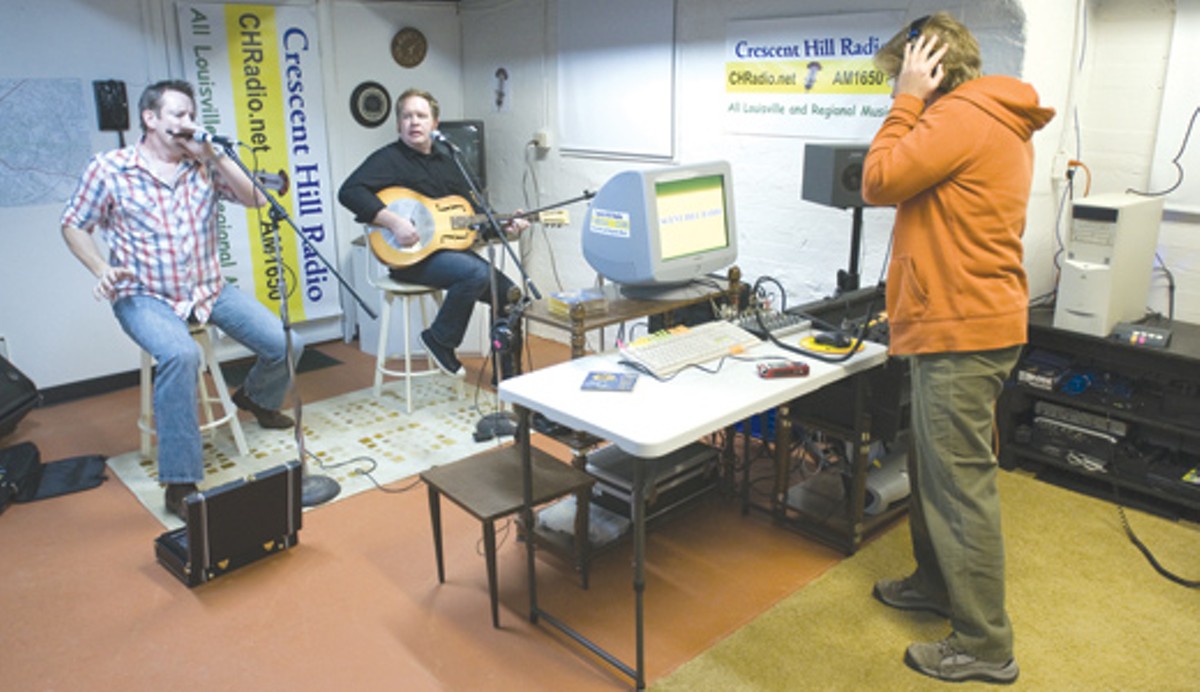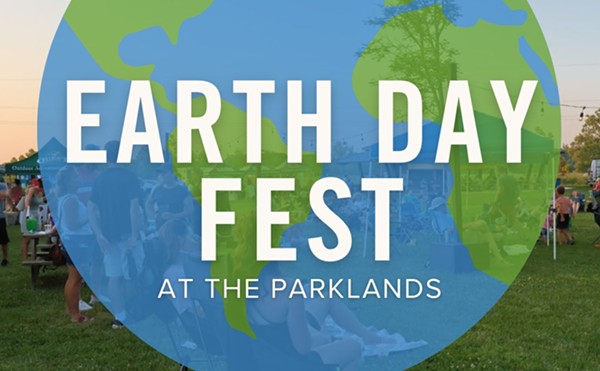The FM dial in Louisville is about to get a little more crowded. The Federal Communications Commission (FCC) is in the process of reviewing applications for Low Power FM (LPFM) stations. A LPFM license allows a nonprofit organization to broadcast on the FM band at 100 watts or less. That is only good enough for the station’s signal to reach listeners in a 3½-mile radius. By comparison, a regional commercial channel like WQMF has a 28,500-watt transmitter.
The FCC began issuing LPFM licenses in 2000, but they were basically limited to stations in rural areas because of restrictions on how close these channels could be to commercial radio. In 2010, the Community Radio Act removed many of the obstacles that kept community radio out of urban areas. The FCC began accepting applications in late 2013 after defending the act against legal challenges from corporations like Clear Channel, which were worried low-watt stations would affect the signals on the frequencies they owned.
Kathy Weisbach, general manager of Crescent Hill Radio (CHR), says having an FM channel would transform her nonprofit station. Listeners can hear CHR online at crescenthillradio.com and on the radio dial at 1650 AM. As an unlicensed AM station, what the FCC calls a “Part 15” station, CHR’s current signal can only be heard for about seven blocks along Frankfort Avenue, between Clifton Avenue and Stilz Avenue. Going FM would not only increase the station’s listenership, but it would also help with the financial bottom line.
“I’ve been paying for this operation since it started,” Weisbach explains. “There are a lot of companies that said they would do underwriting with us if we had FM. That is why it’s so important to me. This thing has to start supporting itself if it is going to last.”
CHR’s application received enough points from the FCC to qualify for a license to broadcast at 106.5. Unfortunately, another organization, the Fellowship of Reconciliation, also picked this frequency for their Forward Radio station, and they tied CHR on points. When two qualified groups apply for the same channel, they are placed in what is called a Mutually Exclusive (MX) Group. There are three ways to resolve the issue: one of the applicants could amend its application to broadcast on a different frequency; the applicants could share the channel; or one of the applicants could withdraw and have the other group reimburse it for its expenses.
“I offered to pay Forward Radio to withdraw, but they didn’t want to do that,” Weisbach says. “It’s frustrating because I’ve been working toward this since I started. I’ve been accumulating all of this programming, and I’m ready to go 24/7. People are waiting for the FM to have shows.”
Crescent Hill Radio began broadcasting from the basement of Weisbach’s Crescent Hill home in March of 2010. In 2012, the station moved into a studio on Frankfort Avenue, where it hosts live performances and has video-streaming capabilities. Weisbach feels CHR should get credit for the years it has been on the air. Forward Radio has a website, but it does not have any programming yet. The FCC awards points to an applicant based on promises to do things like devote time to public service. So, basically, every group that applied in Louisville got the same amount of points on their application.
The only applicant with no competition for its frequency was Vault 1031, which has already received permission to put up its transmitter. The Internet radio station Art+FM is also in an MX Group for channel 97.1. It actually has four competitors for the spot: Louisville Community Radio (LCR), Nur Islamic School, Iglesia La Vina and Squallis Puppeteers. However, Art+FM general manager Sharon Scott says her organization is in a much better spot than CHR. Two of Art+FM’s competitors, Nur Islamic School and LCR, have already had their applications dismissed for not meeting the criteria. Scott expects Iglesia La Vina’s application to also be dismissed because the FCC has accused it of operating as a pirate radio station. If this happens, the remaining applicant, the Squallis Puppeteers, will probably withdraw its application and join forces with Art+FM when the FCC announces its amendment window.
“We ended up in a bigger MX Group than Crescent Hill Radio, but I think Forward Radio is a stronger applicant than the ones in our group,” Scott says. “We are happy with the way things have gone so far. It’s my understanding that this legislation has been in the works for 18 years. There are only so many spots on the FM dial, so who knows when this opportunity may come around again.”
Weisbach intends to apply for another frequency when the FCC begins taking application amendments. CHR’s transmitter will be placed atop Radioland, a two-way radio business at 1421 Lexington Road. This location gives CHR more options for broadcasting than Forward Radio has with a transmitter downtown atop the Heyburn Building.
John Hartman is the editor of Forsooth, a newspaper put out by the Fellowship of Reconciliation and a founding member of Forward Radio. Hartman says his group would actually like to share the channel with CHR, because it would take pressure off of them to come up with 24 hours of programming. However, he understands why being connected to a group that promotes political causes would be uncomfortable for Weisbach.
“We certainly will discuss some controversial issues,” Hartman says. “That’s not something she wants to be a part of. This was just the luck of the draw. We picked one of the less favored frequencies thinking no one else would apply for it. It seems like she had the same idea.”
If Forward Radio and CHR were to share a channel, the organization that has been around the longest would get first pick of the hours. Although CHR has been around for four years, it would actually go to Forward Radio because the Fellowship has been around since 1976. Hartman says Forward Radio has agreed to broadcast from 5 a.m. to 5 p.m., but Weisbach says that would not work for CHR, because it would only give them one hour of “drive time,” or peak listening time.
“I think it would be too confusing to listeners to hear Forward Radio part of the day and Crescent Hill Radio part of the day,” Weisbach says. “I have nothing against what they do. It’s just that most of their shows will be talk radio, and we’re about local music.”






